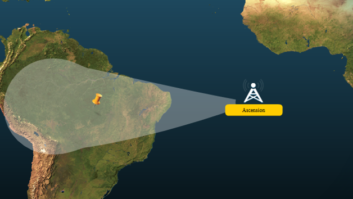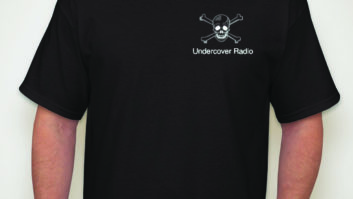
The audience is waiting for you to reach out and touch it. Find it and appeal to it. Stockphoto/Mercè Bellera
Scott Taylor wrote in the Jan. 1 issue about “AM, Losing Its Grip on Reality.”
In my opinion he is correct that terrestrial broadcasting, specifically AM radio, is being challenged by new technologies, especially from those offered by the Internet. He also is correct in stating that mom-and-pop AM operations are losing out to these new competitors.
It has been stated that anyone who does not flow with advancing technology eventually will be eaten up by it.
I am a contract engineer and recently was involved in a project at a television station. Its master control system consisted of five computers running two on-air television stations and three cable channels. This was a one-person operation. No more on-air switching by humans. The same is happening to radio. Automation has come a long way from its beginnings. With careful planning, a station can sound almost as real as if live humans were operating it.
However, mom-and-pop operations such as small daytime-only stations usually do not have the luxury, or the funds, for automation or music license fees, so they are left to fend as best they can with whatever they already have.
Imagine that
In the same Radio World issue, Harry Hoyler, general manager of KKAY(AM), White Castle, La., wrote a letter headlined “Our AM Does Quite Well, Thank You.” He said his station serves the public interest in the community in which his station operates.
What does “community service” mean? People who live in a community want immediate local news and sporting events, local traffic conditions, local government happenings, other special local news activities and on-air editorials.
One daytime AM station where I was employed would tape high school football games on Friday nights and play them back on the air the next day.
Play back a high school game the next day when everyone is aware of the outcome? What kind of nonsense is this? Sounds crazy, doesn’t it?
Well, the station ended up with a waiting list of sponsors who wanted to advertise during the games. Even though people were aware of the final score, the players still wanted to hear their names, or the parents wanted to hear their children’s names, on the air. The program had a very large audience, was very popular and went on for years, making a lot of money.
If operated properly, local remotes also can work. This same station would do a remote broadcast from, say, a paint store. Every 20th person who walked through the door would receive a pound of butter or a pound of bacon. The stores were always packed with people, some of them purchasing paint or whatever products the store had for sale.
Get involved
In another instance, the local newspaper was concerned that a radio station would cut into its circulation. The relationship was becoming adversarial. So the station manager starting purchasing a copy of the paper when it was delivered at 5 a.m. and reading the first few lines of each story on the air. He made sure not to read too much of each one; and he told his listeners that if they wanted to know more to purchase a copy that morning’s paper. As a consequence, the circulation of the paper increased and its owner became a good friend of the radio station.
One station drastically reduced its advertising rates to be more competitive. It then was swamped with advertisers, actually taking some away from its competitors. Management felt that 50 percent of something is worth more than 100 percent of nothing. And the station sounded successful to potential sponsors because it was already full of advertisers.
One gimmick would be “Buy one spot from us, and get another one free.” Everyone likes freebies, including sponsors.
But sitting around at a console, playing records on the air, with no sales staff and no local community service, simply will not work — as the operator of the plywood-shack AM station in Mr. Taylor’s article was finding out.
Get involved in the local Chamber of Commerce. Let them know that your station’s advertising rates will be adjusted to be fair to everyone, and that you are there to assist in any natural or manmade disasters that may befall the community. Make friends with local community business and government leaders.
As far as music license fees are concerned, both sides of the issue appear to benefiting from playing music on the air. The stations get free material to play; the record companies get free air plugs for their products. A free exchange, with no money changing hands. What could be fairer, or simpler?
No other medium can present local events in the immediate, easy and accessible way as terrestrial broadcasting can. The Internet cannot. Turn on a radio within the range of a transmitter and there it is. The audience is waiting. Find it and appeal to it. Come on, folks! Serve your local communities, or sell your broadcasting operations to someone who will.
Jerry D. Burling, CSTE, is a contract engineer in Long Beach, Calif.










